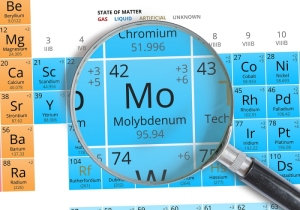by
John W. Mitchell, Senior Correspondent | October 20, 2016
A research team at the University of Missouri-Columbia is working to address a longstanding problem with the availability, safety and cost of producing the workhorse SPECT isotope Molybdenum-99 (Mo-99) by developing new materials for making the vital diagnostic element.
They hope to combine sulfides with the metals osmium, tungsten and molybdenum in an effort to produce isotopes that will be more plentiful and easier to recycle.
"Our work on the process for making the radioisotopes from the metal disulfide targets is going well," Silvia Jurisson, professor of chemistry and radiology at UMC told HCB News. "We are developing chelates for use with rhenium-186 and technetium-99m for potential use in vivo for targeting cancer, for example."



Ad Statistics
Times Displayed: 2147
Times Visited: 10 Fast-moving cardiac structures have a big impact on imaging. Fujifilm’s SCENARIA View premium performance CT brings solutions to address motion in Coronary CTA while delivering unique dose saving and workflow increasing benefits.
According to Jurisson, the production expenses associated with producing Mo-99 without using highly enriched uranium are "quite costly." Their research is intended to find other metal target forms that can be irradiated to generate the same diagnostic and therapeutic byproduct at a lower cost.
The demand worldwide for Mo-99 is increasing at about five percent a year. According to the World Nuclear Association, more than 10,000 hospitals worldwide now use radioisotopes in medicine.
The challenge of producing Mo-99 through the current process is also complicated by the fact that any radioactive material decays. Because of this, the isotope has to be used in three days before it is no longer viable.
"Enriched metal target materials can cost as much as $10,000 for miniscule amounts," Jurisson said. "Therefore, finding ways to recycle and reuse these materials has become an important task ... This means that this very expensive metal can potentially be recycled to cut down on health care costs, while still being effective."
Jurisson, who is also a research investigator with the MU Research Reactor, has teamed with Matthew Gott, a recent MU doctoral graduate student, to expand on previous research about alternative metals. The project was funded by the Office of Nuclear Physics at the Department of Energy.
"One of the main challenges in today's climate is maintaining funding for carrying out the research," said Jurisson. "Training the next generation of scientists is an important aspect of our work, as is developing new materials and new radiolabeled compounds from the radioisotopes for potential use in diagnostic and therapeutic radiopharmaceuticals."

